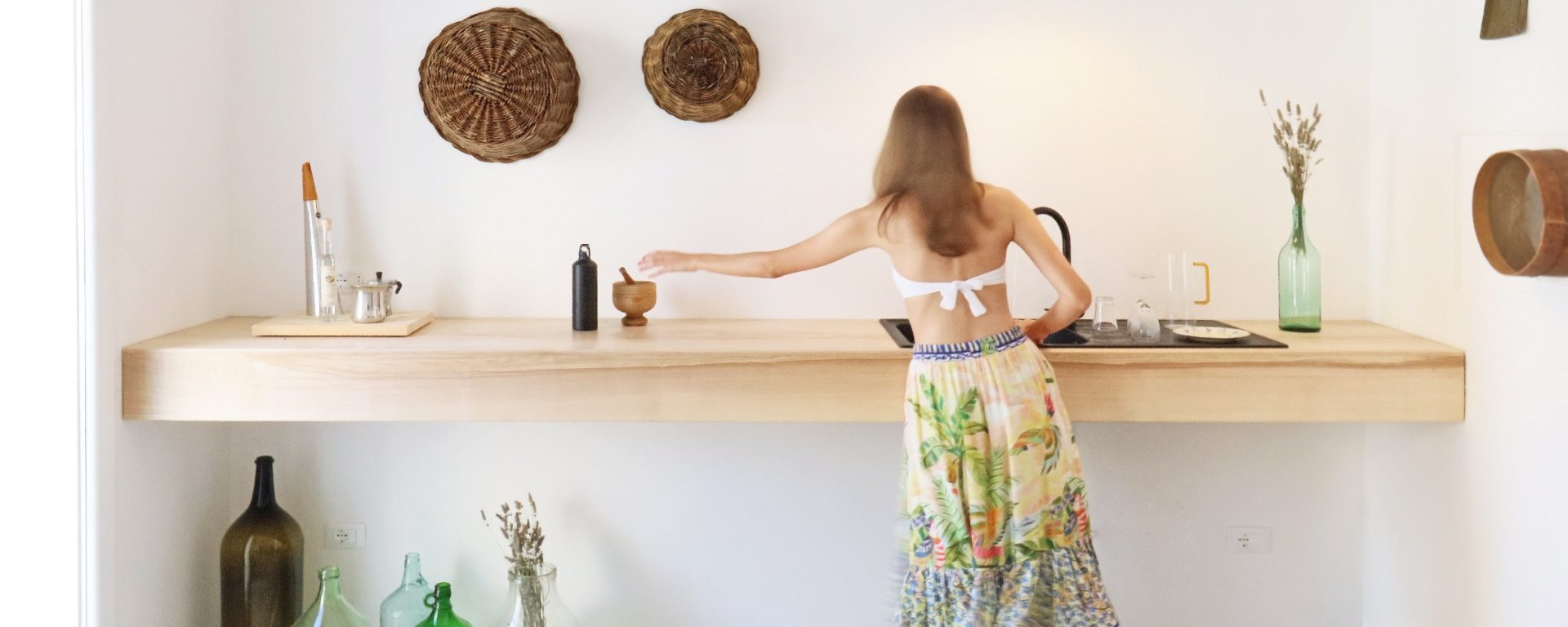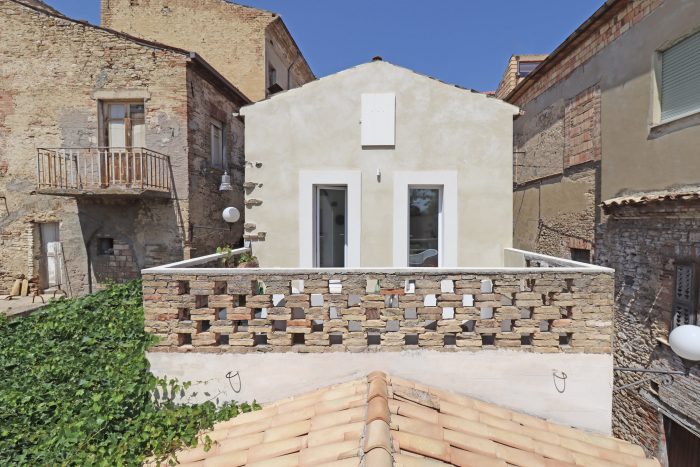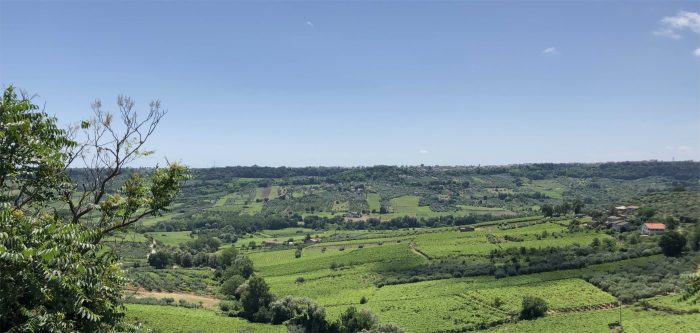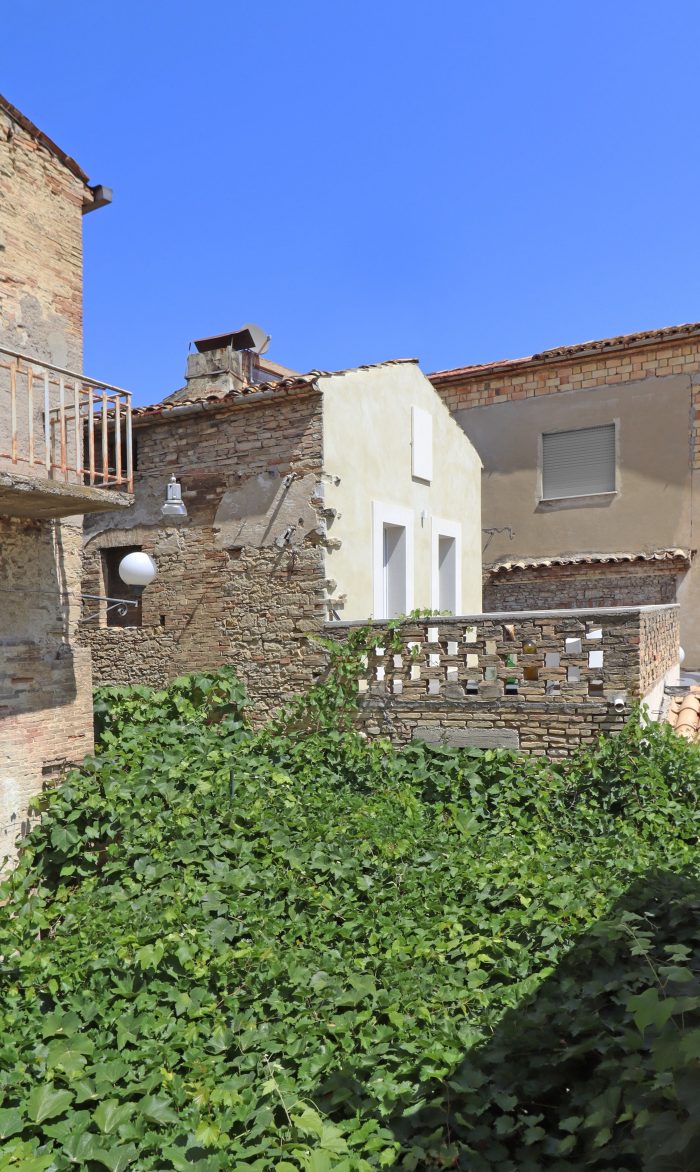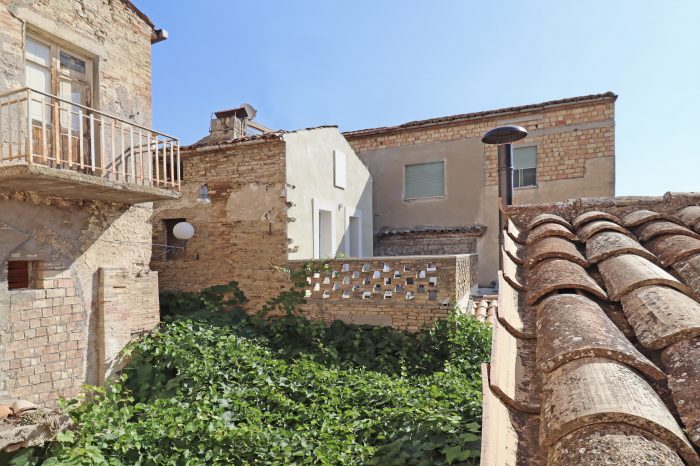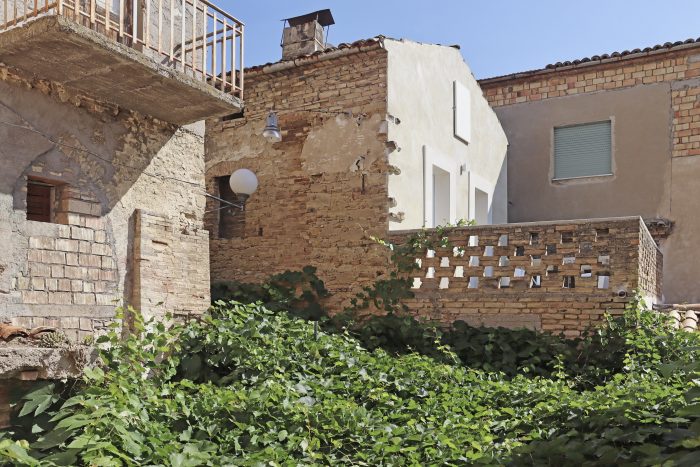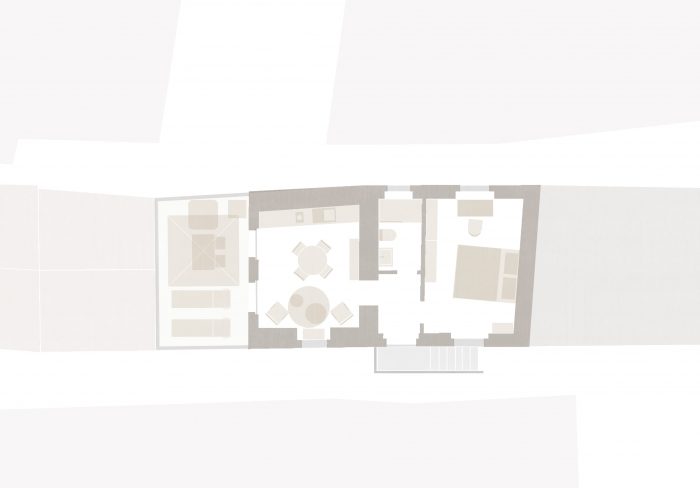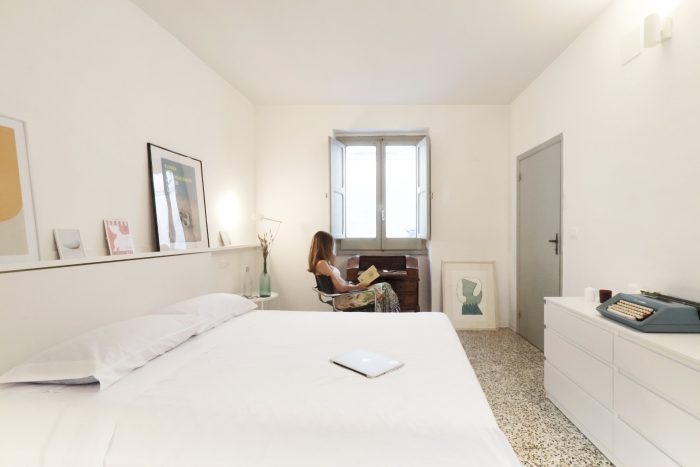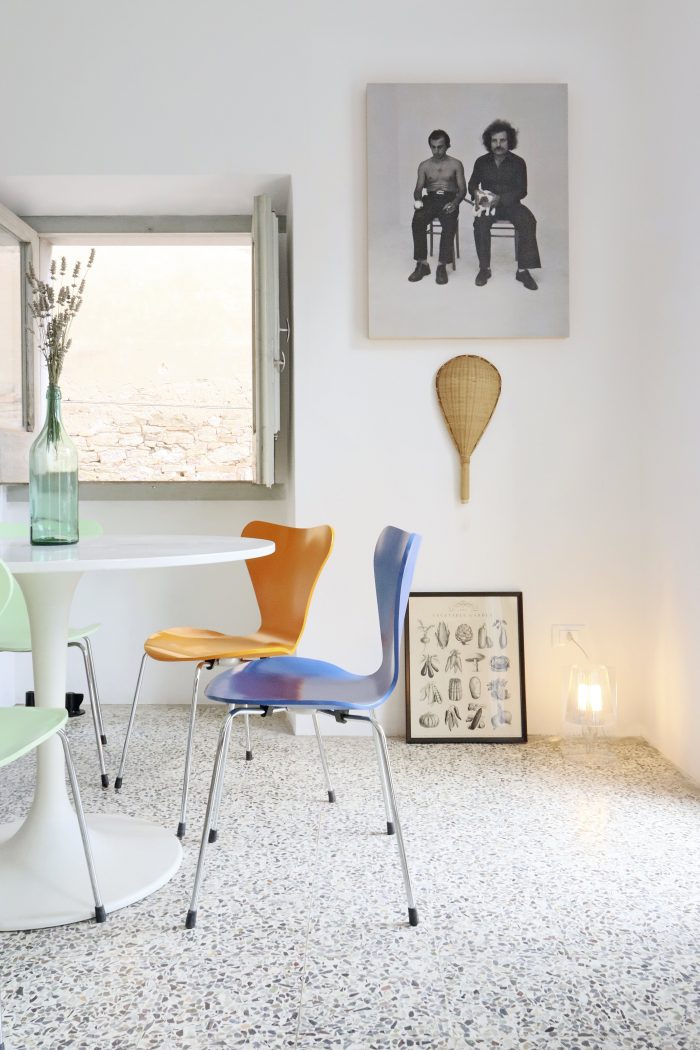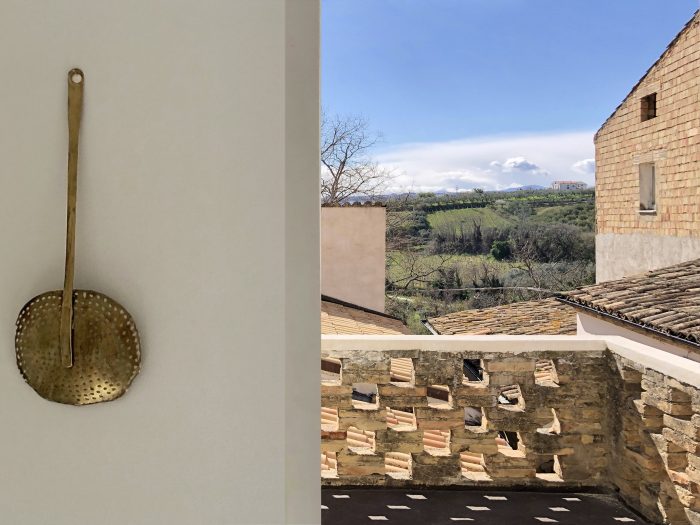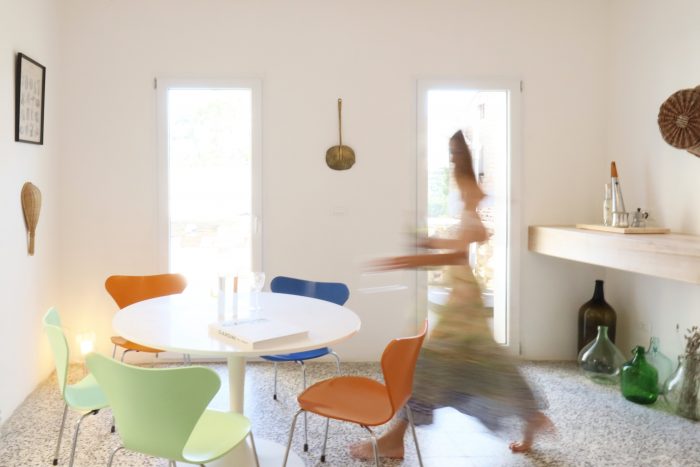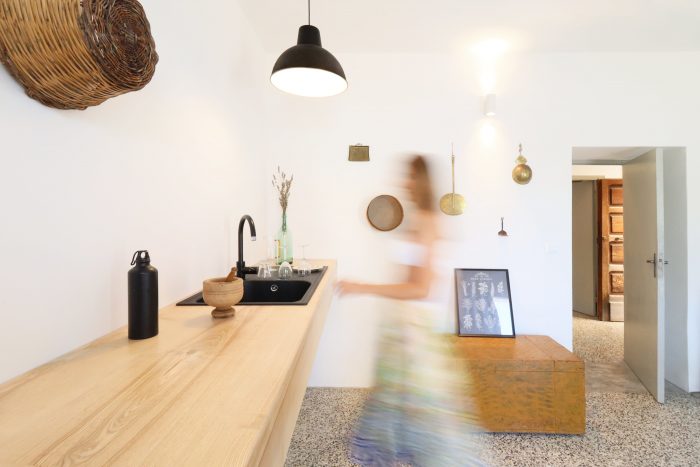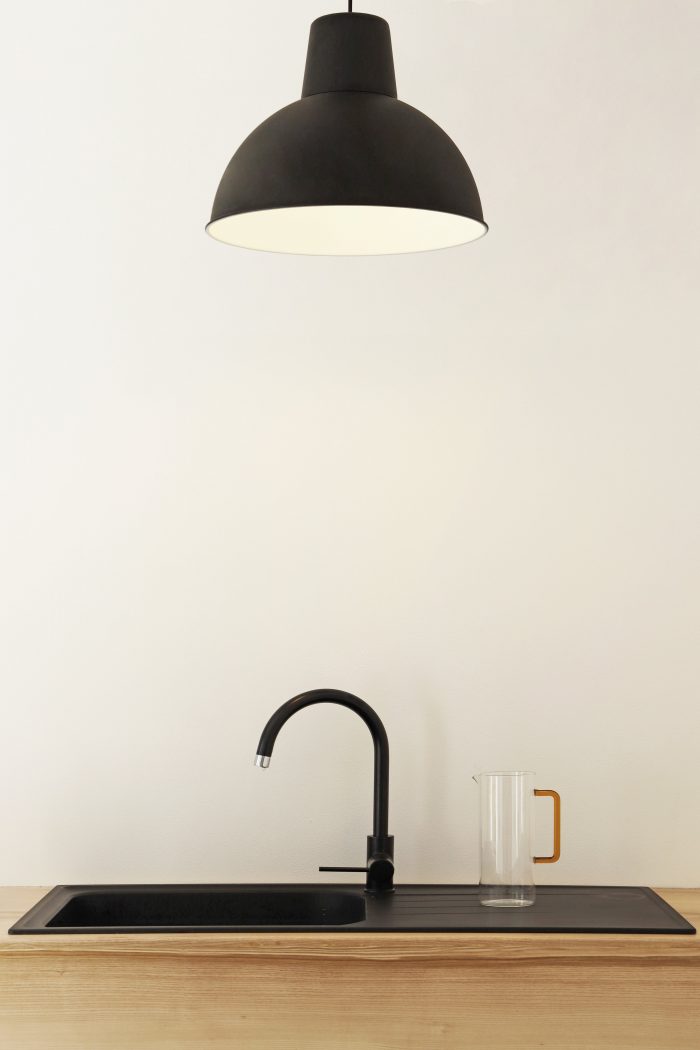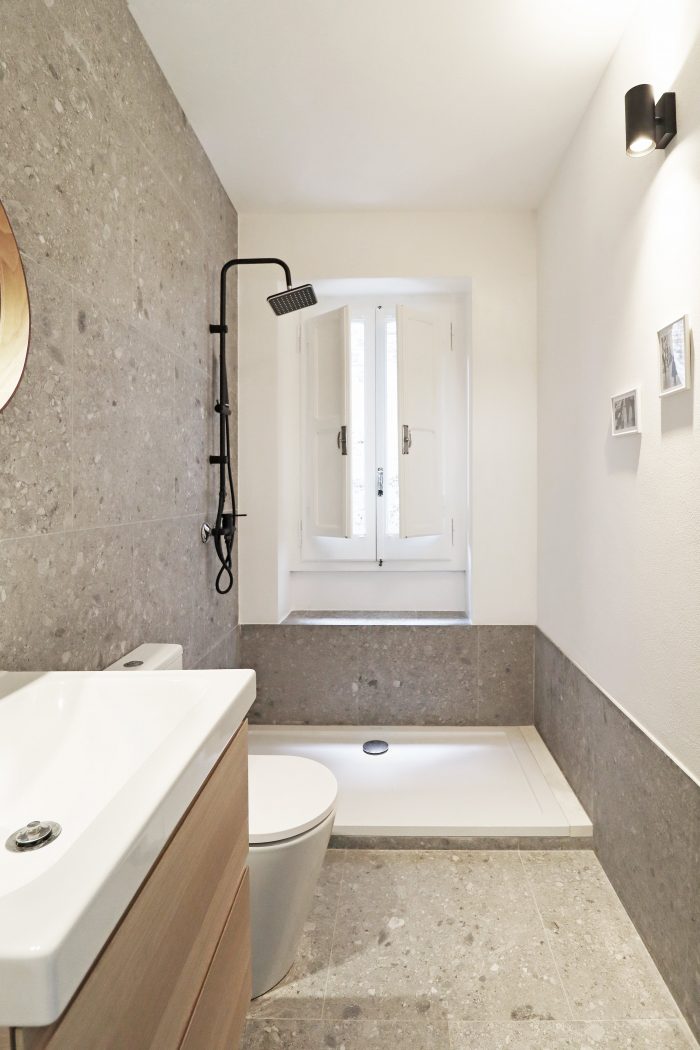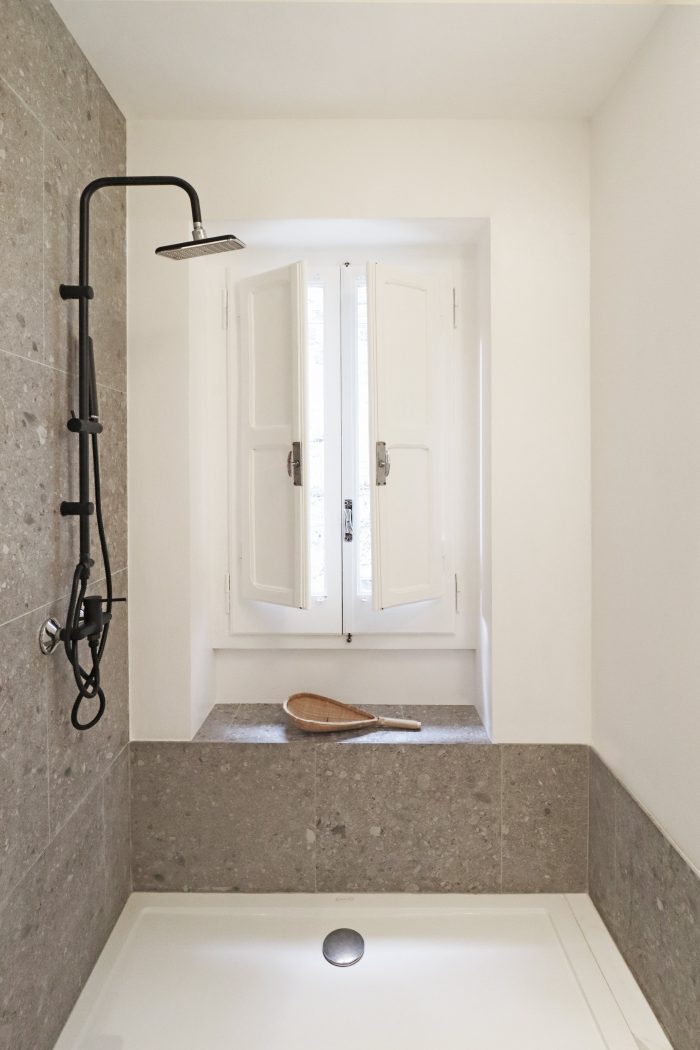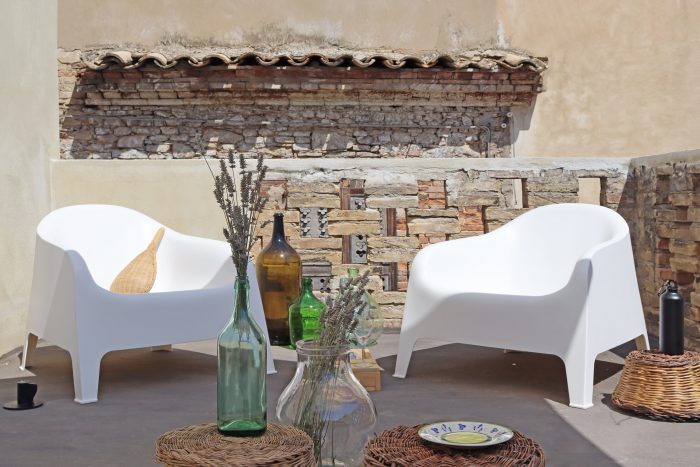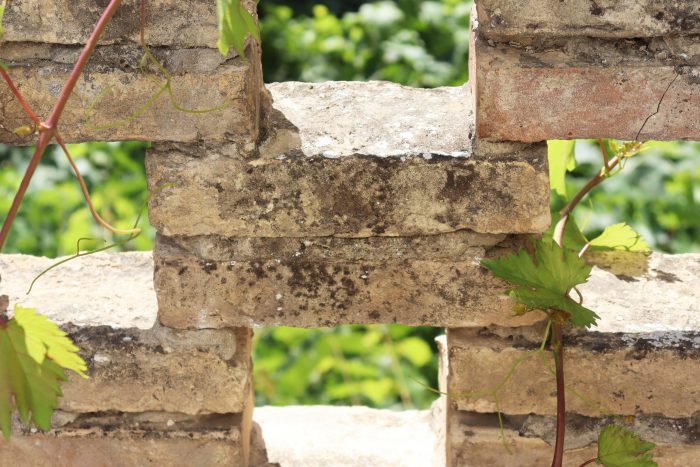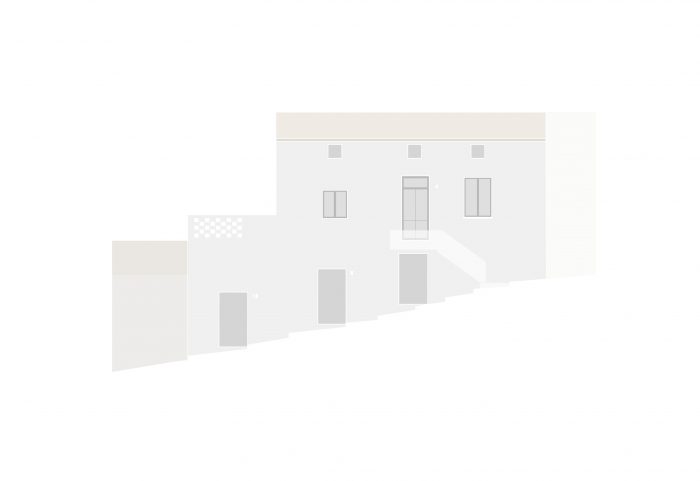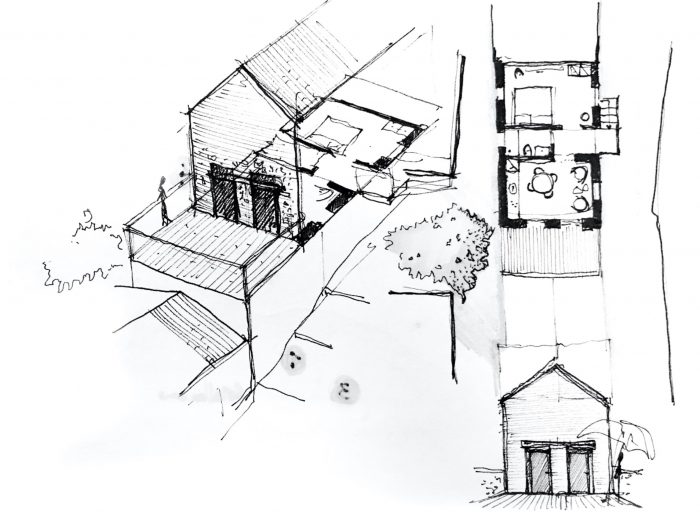一座具有古老形态的房子,但在20世纪下半叶被完全翻新。在一个小的历史中心的中心,紧邻一个微型城市葡萄园。
这座房子的项目是基于加强其身份的愿望,同时加强其特殊地位。
A house with an ancient morphology but completely renovated in the second half of the 20th century. In the heart of a small historic centre and next to a micro urban vineyard.
The project for this house is based on the desire to reinforce its identity and at the same time enhance its special position.
在外部,最近的附加物被移除,生活区被开放到大露台上,俯瞰屋顶、葡萄园和远处的耕地山丘。从房子到建筑和农业景观的一个新的视点。
建筑物的下层,保留了更多的农村特征,仍在修复和设计中。
On the outside, recent additions were removed and the living area was opened up to the large terrace overlooking the roofs, the vineyard and the cultivated hills in the distance. A new viewpoint from the house onto the built and agricultural landscape.
The lower floor of the building, which preserves more rural characteristics, is still being restored and designed.
在内部,上个世纪的干预措施通过20世纪60年代的典型材料和设备改造了农村的房子。在这个时代,对现代性的渴望往往胜过传统的技术和材料。
室内设计的概念是要在房子的历史身份、它的农村历史和60年前表现出来的对现代性的渴望之间取得平衡。
Inside, the interventions of the last century have transformed a rural house through materials and devices typical of the 1960s. A time when the desire for modernity tended to prevail over traditional techniques and materials.
The concept for the interior sought to strike a balance between the historical identity of the house, its rural past and the desire for contemporaneity manifested 60 years ago.
篮子、传统家具和物品,其中一些已经在房子里了,连同其他在该地区建造的古董家具一起被回收。新的家具,如桌子、床和大抽屉柜,被选择为温暖的白色,以便把它们放在一个次要的感知水平上。
另一方面,一些插入物通过重要的设计图标,让人想起房子在20世纪的过渡。在睡眠区有Mart Stam的悬臂椅,在起居区有Arne Jacobsen的彩色7系列。
Baskets, traditional furniture and objects, some of which were already in the house, were recovered, along with other antique furniture built in the area. The new furniture such as the table, bed and large chests of drawers have been chosen in a warm white colour in order to place them on a secondary perceptive level.
Some inserts, on the other hand, recall the transition that the house made during the 20th century through important design icons. In the sleeping area there are cantilever chairs by Mart Stam and in the living area the colourful Series 7 by Arne Jacobsen.
厨房是定制设计的,主要是为夏季偶尔使用而构思的,根据客户的需求和高度来调整尺寸。它是由一根白蜡木制成的实木,被缩减为一个简单的悬空体积,以尽量减少它在狭小的生活区的感觉。厨房的必需品,如电器、餐具和一个可移动的电磁炉,都位于一个涂有松木的古董树干内。
The kitchen was custom-designed and conceived for occasional and mainly summer use, calibrating the dimensions to the clients’ needs and height. Made of solid wood from a single ash log, it was reduced to a simple suspended volume in order to minimise its perception in the small living area. Kitchen necessities, such as appliances, dishware and a removable induction hob, are located inside an antique trunk made of painted pine wood.
浴室,就像老城区的大多数房子一样,是最后增加的房间,从类型上看是一个异形体。它已被完全重建,用Ceppo di Gré的石器包层,寻求与房子其他部分的修复的 “水磨石 “地板的对话。
一个重叠和重写的故事,新的干预试图讲述和解释。
The bathroom, as in most houses in the old town, was the last room added and is typologically an alien body. It has been completely rebuilt with a Ceppo di Gré stoneware cladding, seeking a dialogue with the restored ‘terrazzo’ floor of the rest of the house.
A story of overlapping and rewriting that the new intervention seeks to tell and interpret.
Architects : arcari cimini architettura
Gross floor area: 58 m2
Project year: 2020
Year of construction: 2022
Photography: B. Arcari
Manufacturers: CVR,Nord resin,Marazzi,Jacuzzi, Leroy Merlin,Vimar,Kartel,Ikea + Custom carpenter items ,M. Stam,Jacobsen
Architecture concept: A. Cimini + B. Arcari
Main architect: R. Cimini
Engineering: C. Iacovella
Construction management: R. Cimini
City: Frisa, Abruzzo
Country: Italy

